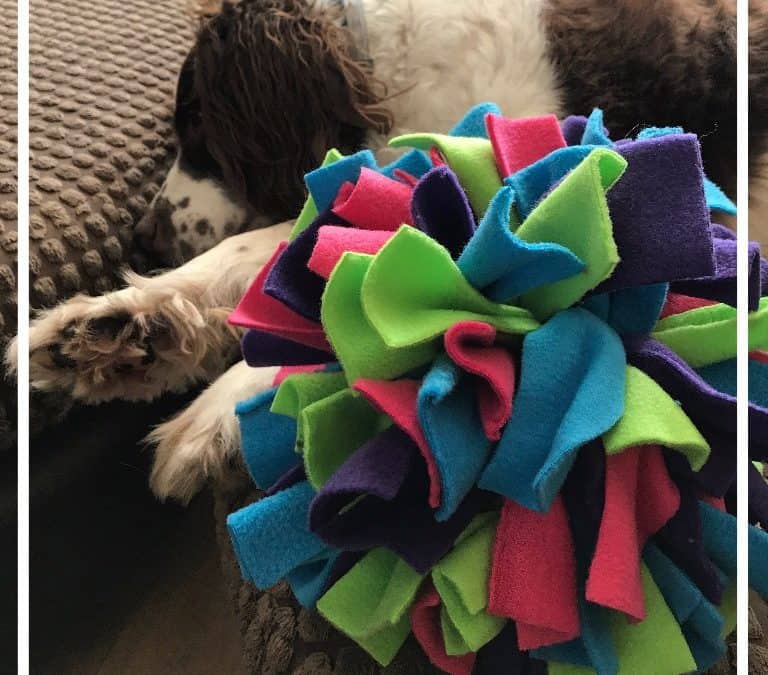We are all limited in how often we can leave the house during lockdown. No doubt you are mostly combining your once a day exercising allowance with the daily dog walk. Some days though it just isn’t possible. You feel guilty because your dog isn’t getting out and worried that he’ll be bored and could develop behaviour problems.
You know what? No walks, no worries. Let me tell you how we’re dealing with it.
Stave off Boredom with Enrichment
When you hear the word enrichment I bet you think of those food puzzle toys or stuffed Kongs. It’s really common to think of enrichment as just a way to make dinner time last longer. Or maybe you think about the big cat enclosures with complicated structures and the thought of doing something like that seems overwhelming.
Simply put, enrichment is making your dog’s mind think and/or body work. Notice that a requirement isn’t that we try and simulate what they would be doing ‘in the wild’ or in our case ‘if we weren’t in lockdown’. Enrichment is nothing to be scared of or difficult. It’s absolutely something you can do with what you have on hand.
Here’s a previous article on enrichment and why you should do it.
Use Your Usual Daily Walk as Inspiration
Let’s think for a moment on what happens on the usual daily dog walk. Your dog might get to be off lead, sniffing what he fancies, following track and trails that other people and animals have left. He probably gets to move at different levels of intensity, sometimes walking, sometimes trotting. Maybe you throw treats or toys occasionally so he chases. Maybe he gets to swim, or chase the occasional bird or squirrel, picks up sticks or branches and has a chomp. Eats grass. Goose poo. Or is that just my spaniels?
My dogs’ walks are made up of moving at different speeds. Jumping and climbing on top of tree stumps, benches and log piles. Sniffing all the things. Running about with sticks and convincing me to throw the occasional one in the pond. Eating deer poo, rabbit poo, goose poo, all the poo.
Our enrichment activities try and recreate these things in creative ways. Indoor games and training, movement exercises, lots of scent games and eating games (not poo). Here are some ideas for you to try.
1. Chewing, It’s a Dog Thing
So your dog might not spend his walks chewing, but he probably does a bit of chewing at home. He may well appreciate having a few more legitimate chew items right now if other activities have dropped in frequency. If your dog is chewing more, or has suddenly started chewing other items, look at what he is choosing to chew on and try and match the material as best you can.So if he is chewing the dining table legs he might like a root chew, if he’s targeting soft furnishings then softer toys for him to shred would be a good choice.
Flint looooves chomping plastic so he gets empty drinks bottles and nylabones to chew on (the nylabones are the better choice if you’re having to do a lot of conference calls right now, much quieter).Chews might be edible like tripe sticks, bully sticks and other body parts of various farm animals. Or they might be non edible and last a while. Rotate the non edible chew items every few days to keep it novel.
2. Slow Mealtime Down
There’s an entire industry dedicated to providing food dispensing toys for dogs. Toys for stuffing and those that require more activity by pushing, flipping or tossing it around to get the food out.
For a cheap solution, I use empty drinks bottles and just pop in a handful of kibble. For the canine Einsteins I crumple up paper and stuff that inside so the food is more difficult to get out.
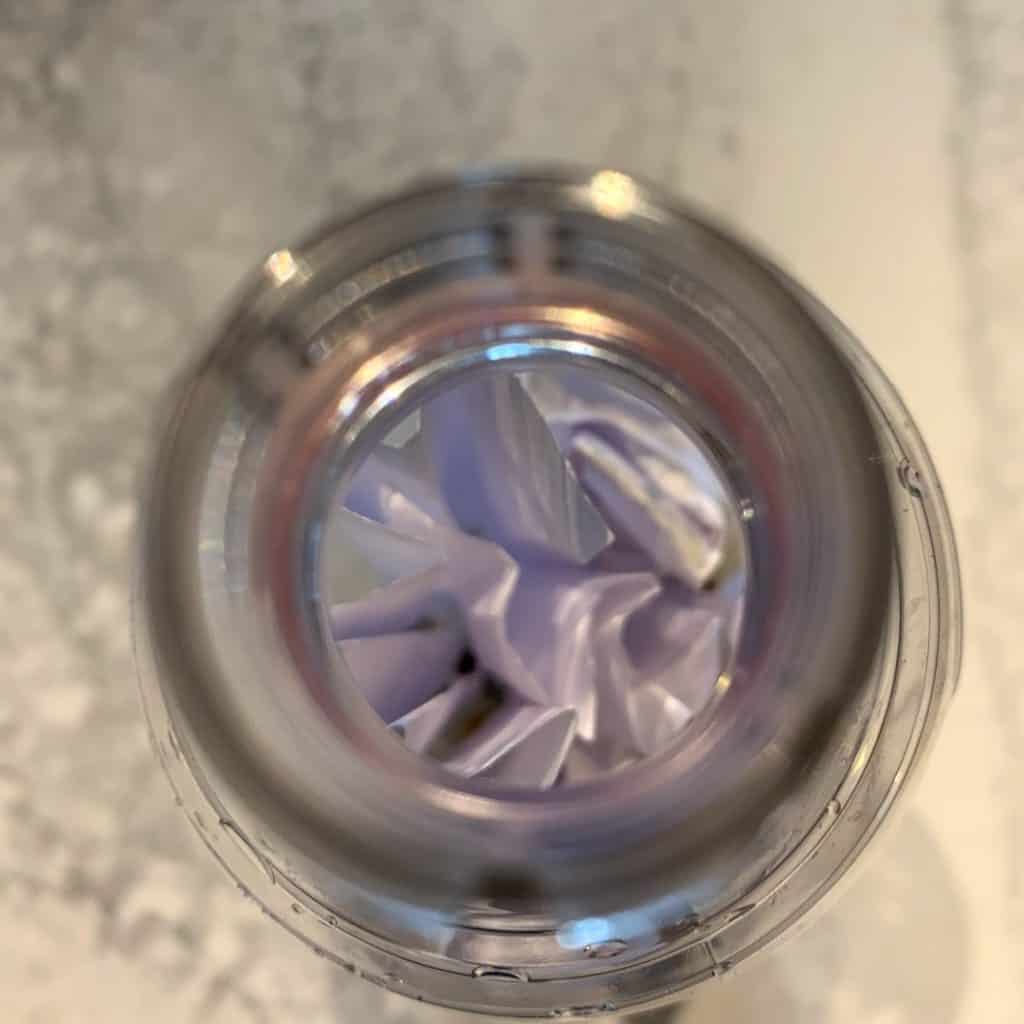
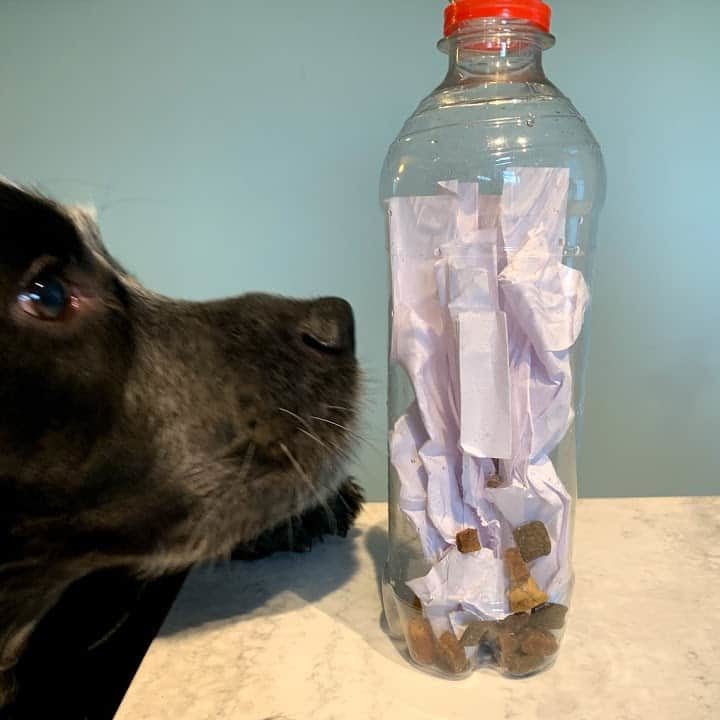
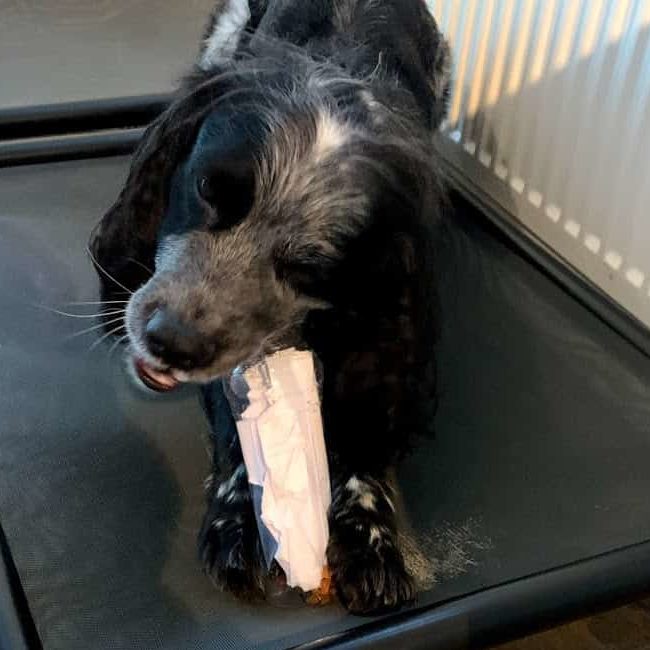
I make at least one meal a day from a food toy for my guys.
Scatter feeding, is an alternative to using a food toy. It’s especially good if you have overgrown bits of garden that they’ll need to really rummage around in. Make sure it’s safe for them to be snuffling through – no poisonous plants or lawnmowers or garden shears in the area. Do be careful if your dog is like mine and rather bullish. We’ve had planters toppled over by an overly enthusiastic searcher and they have no qualms about trampling any plants.
3. Give Your Dog a Training Challenge
A great way to build your bond with your dog and help stave off quarantine boredom for both of you is to add a few short training sessions to your day. Training a little each day in short bursts – 5 mins sessions are perfectly adequate. Making the training useful to you is a bonus but not necessary. I like training useless tricks to sharpen up my own skills and just have some fun. Consider trying tricks, obedience, whatever you like, it doesn’t matter. It’s about using up some brainpower and learning something new.
4. Let Your Dog Use His Nose
This can be as simple or as complicated as you want to make it. Hide treats or toys around the house or garden and send your dog to find them. Make sure you check for safety. When following scent, dogs will often approach the ‘find’ in the complete opposite direction than you thought they would. They are following the scent on the air and not their eyes so watch for trailing wires or furniture that might tip and don’t hide things near the drug or cleaning cupboard.
I like using squished cheese for searching. Just plain mild cheddar which has good squishability without crumbling properties. I also have two dogs that search for catnip scented items, but you don’t have to teach your dog a specific scent to search for. Searching for food comes pretty naturally and will be all you need to entertain your dog.
For toy searching, tennis balls or kongs tend to work pretty well, but any favourite toy is going to work if your dog likes it and wants it.
A snufflemat or ball can be fun too. Part scent, part food toy, many dogs like using them and they tend to encourage a standing head-down behaviour. I say tend because my dogs fling the sniffle mat to dislodge all the food and just hoover it up! Hence the snuffle ball that is a more flingable activity.
Here’s how I made the snuffle ball.
5. Play A Game Together – it will help you both de-stress
We are trying to integrate the kind of movement that your dog might engage in during a walk here. Sort of.
Play with you will help your relationship as well as work muscles. Tug, retrieve, or personal play are all great options. My dogs enjoy the ‘I’m going to get you’ with added witch fingers. My husband and old GSD invented the ‘what’s under the blanket’ game.
I love those games that have naturally developed and become a special thing between you and your individual dog.

6. Thoughtful Movement and Conditioning Exercises
Leg movement appears to be critical brain and nervous system health. You don’t’ need to hike every day though for the same benefits, which is very good news for us right now.
You could set up a homemade caveletti set (bamboo canes on flower pots or similar works fine) and teach your dog to walk and trot down them. Work on coordination, not speed. Start with walking without knocking over poles before you move on to trotting .
There are plenty of examples of conditioning exercises to try at home. We do sit to stand and down to stand exercises every day for muscle maintenance and physio purposes. Look for slow controlled movement just like you would do if you were doing your own conditioning exercises.
Sit to Stand
- For beginners, start on a firm grippy surface – a mat on the floor is perfect.
- Ask your dog to sit, then hold a treat by your dog’s nose and move your hand slowly so that your dog pushes up with his back legs into a stand.
- The movement of his back legs should be like us rising from a squat.
- Once he is standing give him the treat.
- You can lure him back into the sit again or just cue him.
- I always lure my dogs into the stand when I’m doing this as a conditioning exercise so they move slowly.
- 5 or 6 repetitions is plenty when they start out.
Down to Stand
- Start with your dog in a down.
- You want them in a sphinx style down, so their hips are square, not rolled to one side.
- Hold a treat by your dog’s nose and move your hand slowly away and up in a diagonal direction so your dog pushes up with his back legs into the stand.
- Once he is standing give him the treat and go again.
- Just 5 or 6 repetitions to start with.
7. Playing With Toys On His Own
Don’t forget just the usual toys that your dog might entertain himself with. Whether he invents his own game of tossing the toy down the garden steps to run and chase it, or enjoys lying on his back with toy between his paws like an otter, he’ll be using different muscles and it’s always useful for them to entertain themselves.
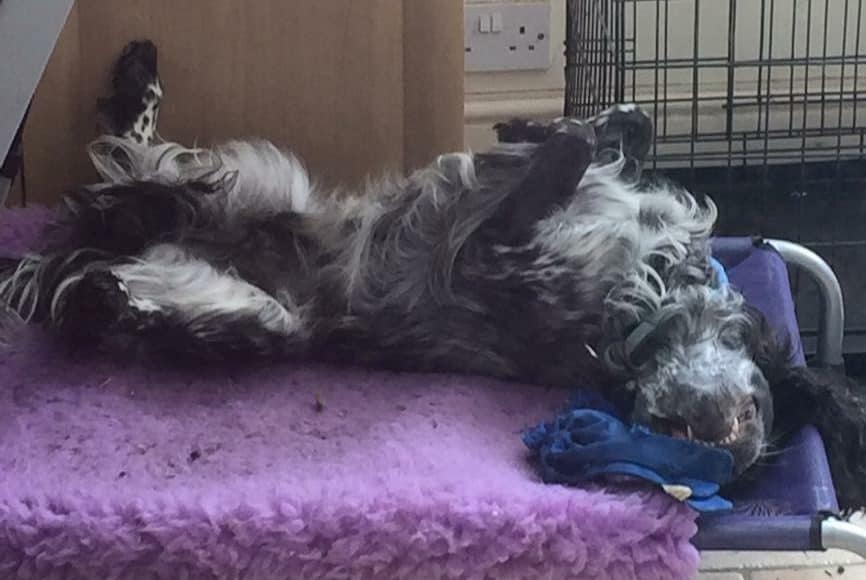
Have different toys to encourage different activities and rotate them every few days, although if they have a favourite like Fraggle keep that out all the time if they’ll be completely bereft without it.
8. Shorter walk activities
For shorter walks, consider ways to get your dog’s brain and body working. You might try:
- Using your new walks for a bit of training. It’s an ideal time to practise loose lead walking on quiet streets. That’s exactly what we’ve been doing on at least part of our walks.
- Cheese hunting! Take your scentwork on the road. I usually just use cheese (or just whatever treats I’ve got with me) and scatter in long grass, or squish onto tree trunks or fence panels and ask my dogs to find it.
- Sniffari. Let your dog choose where to go for a change, let him stop as often as he likes to sniff everything he wants. You might be surprised where he takes you. You’ll definitely be surprised about quite how long he wants to sniff in the same spot. We never seem to go very far on our sniffaris but my dogs are pretty satisfied with their adventure none the less, the current favourite is the small industrial estate near us. It’s somewhere we would never go normally as it’s so busy

